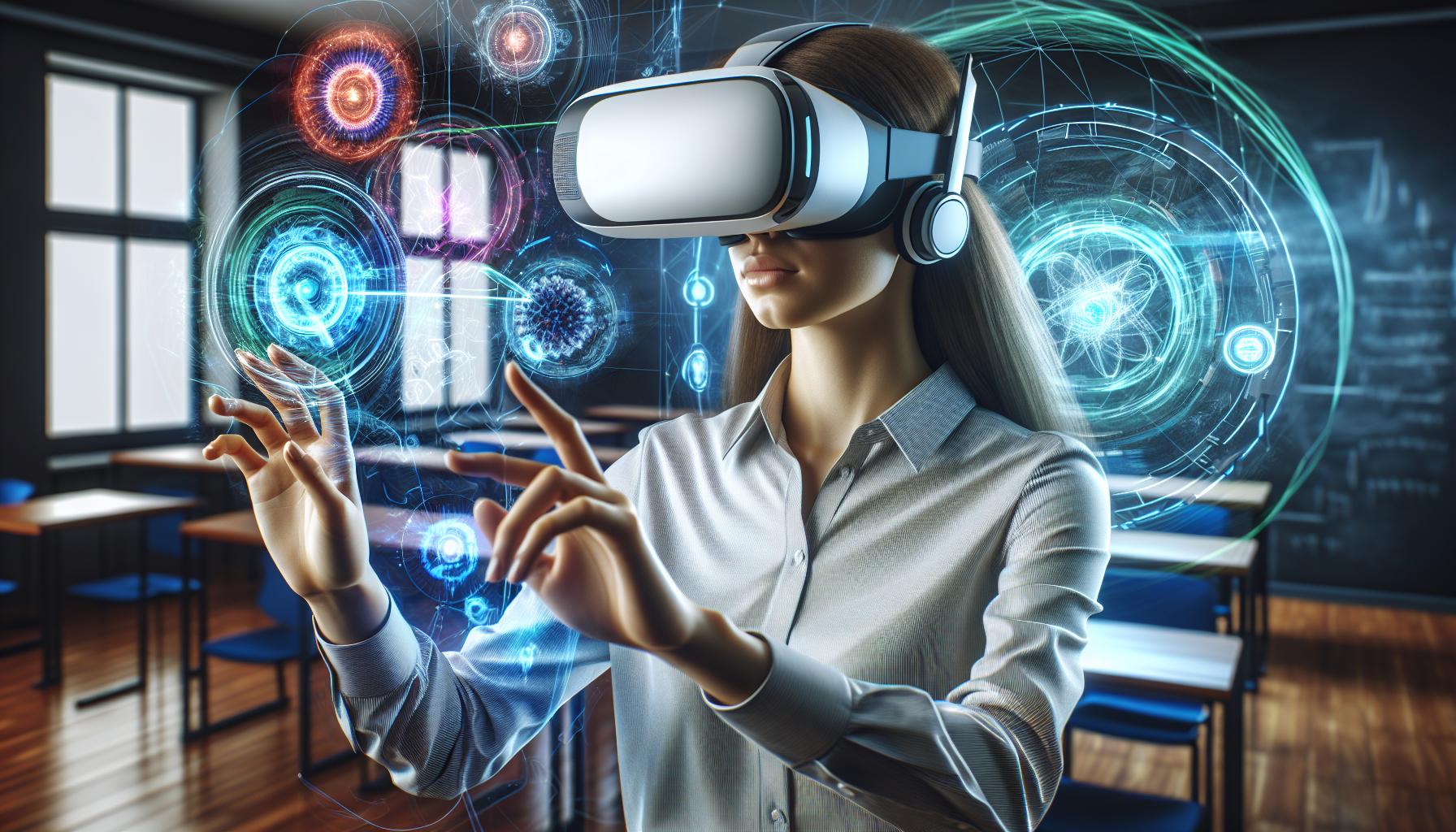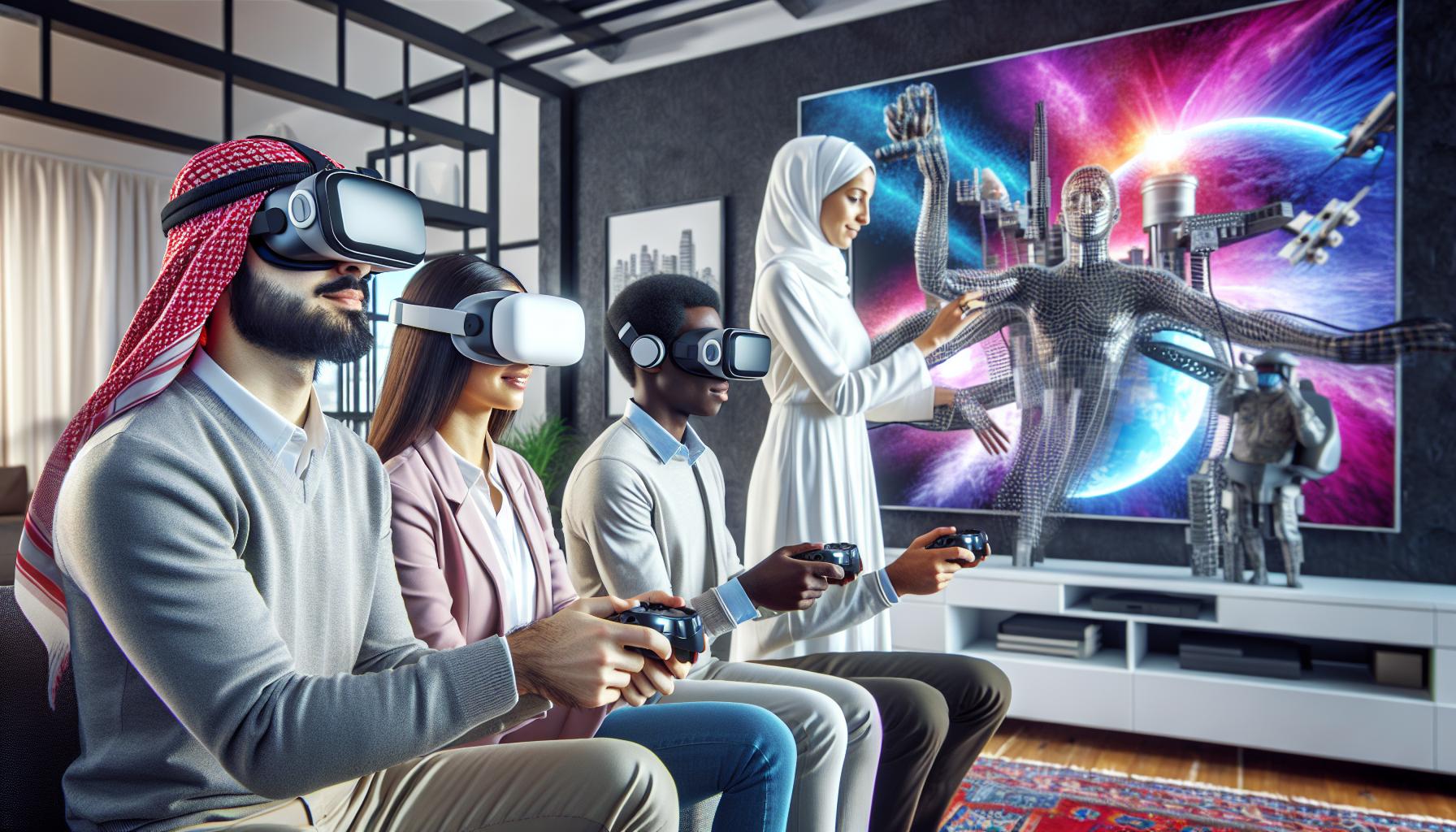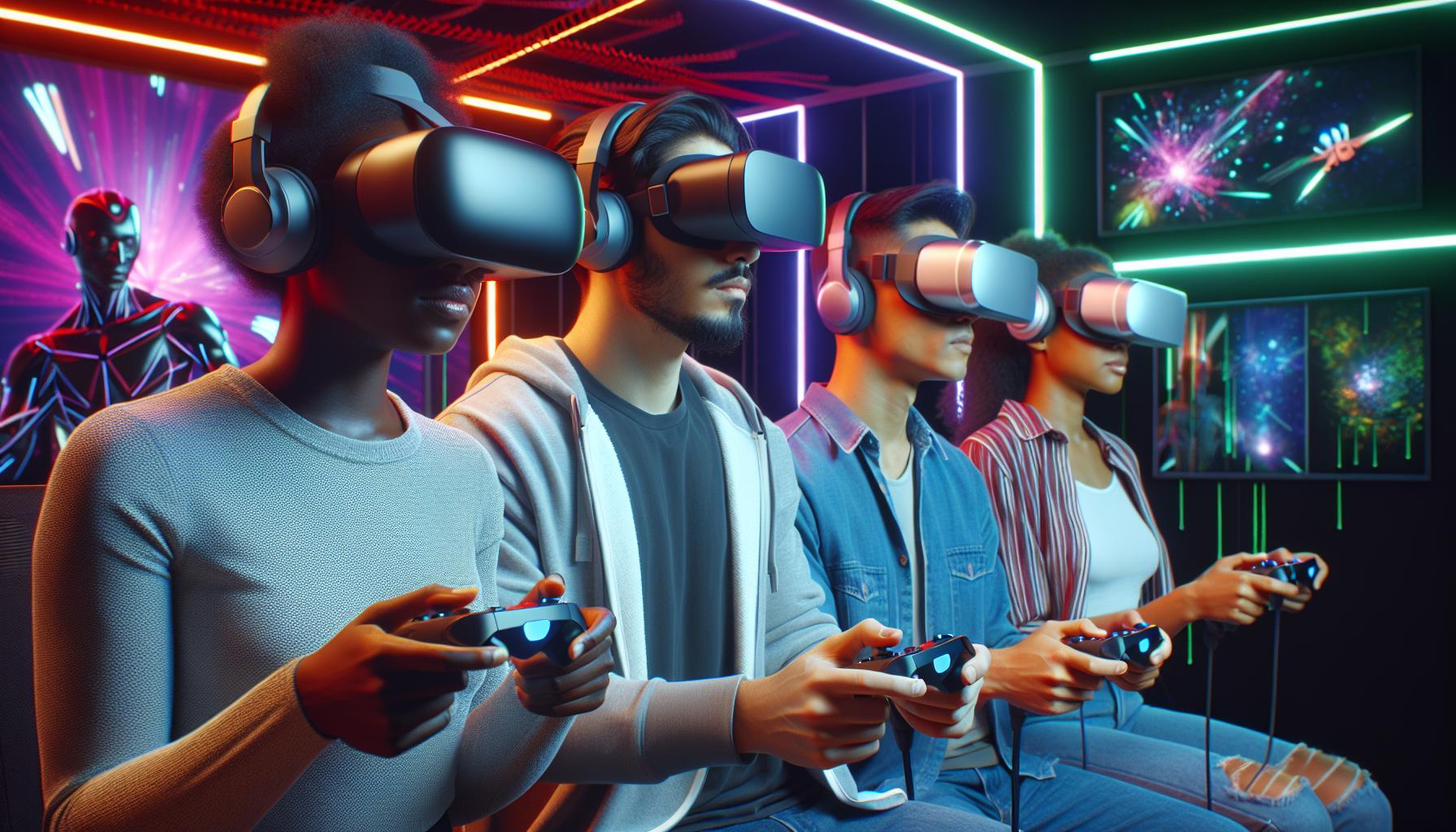Key Takeaways
- Immersive Experiences: Virtual reality (VR) creates engaging and immersive environments that enhance user interactions with digital content through realistic graphics and sound.
- Diverse Applications: VR spans multiple sectors, including gaming, education, healthcare, and entertainment, providing unique opportunities for learning, training, and therapeutic practices.
- Enhanced Learning: VR facilitates immersive learning experiences, improving retention rates by up to 75% and allowing users to practice skills in safe, simulated scenarios.
- Technical and Accessibility Challenges: High costs, technical limitations, and accessibility issues hinder widespread adoption of VR, impacting the experience for users with disabilities or budget constraints.
- Continuous Technological Evolution: Advancements in motion tracking and artificial intelligence are enhancing user interaction and personalizing VR experiences, making them increasingly dynamic.
Virtual reality (VR) is transforming the way people interact with digital content, offering immersive experiences that blur the lines between reality and imagination. With advancements in technology, VR has evolved from niche gaming into a versatile tool used in education, healthcare, and entertainment. It allows users to explore new worlds, learn complex concepts, and even practice real-life skills in a safe environment.
As the popularity of VR continues to grow, so does the range of experiences available. From breathtaking adventures in fantastical realms to practical applications in professional training, virtual reality captivates users like never before. This article dives into the fascinating world of VR experiences, highlighting their impact and potential in everyday life.
Virtual Reality Experience
Virtual reality (VR) creates immersive digital environments, transforming user engagement with digital content. Users don VR headsets to enter simulations that mimic real-life scenarios or entirely imaginative worlds. VR technology utilizes computer-generated graphics, sound, and haptic feedback, providing a multi-sensory experience that enhances realism.
Applications span various fields. In gaming, VR offers interactive adventures that heighten player engagement. In education, VR enables simulations for complex subjects, fostering deeper understanding. Healthcare professionals use VR for surgical training, allowing practice in a risk-free environment. Additionally, VR’s role in therapy aids patients in confronting fears or managing stress through controlled exposure.
The technology continually evolves, integrating advancements such as motion tracking and artificial intelligence. These developments improve user interaction and personalization, leading to more dynamic experiences. VR also finds applications in social interaction, enabling users to connect in shared virtual spaces, transcending geographical limitations.
Overall, the virtual reality experience represents a significant shift in how individuals interact with digital content, enriching learning, entertainment, and therapeutic practices.
Benefits Of Virtual Reality Experience

Virtual reality (VR) offers numerous advantages that enhance user interactions and learning experiences. The unique attributes of VR foster engagement and innovative learning methods.
Enhanced Engagement
Enhanced engagement occurs when users immerse themselves in realistic and interactive environments. VR stimulates interest through 360-degree visuals and spatial audio. Users explore content at their own pace, making interactions more compelling. The intensity of experiences, such as realistic simulations in gaming or training, captures attention effectively. Research shows that VR increases retention rates by up to 75% compared to traditional methods. Users report heightened motivation and enjoyment, leading to sustained participation in activities.
Immersive Learning Opportunities
Immersive learning opportunities provide users with hands-on experiences in various fields. In education, VR creates realistic simulations that enhance comprehension of complex subjects. For instance, medical students can practice surgical techniques in lifelike settings, honing their skills without risk to patients. In history classes, students can virtually visit ancient civilizations, promoting deeper understanding. Organizations use VR for employee training, allowing staff to navigate challenging situations safely. Data indicates that VR training reduces onboarding time by 40%, significantly improving efficiency. Overall, immersive learning through VR equips users with practical skills and knowledge in engaging ways.
Challenges And Limitations

Virtual reality (VR) experiences face several challenges and limitations that affect their widespread adoption.
Technical Limitations
Technical limitations hinder the full potential of VR. High-quality VR experiences require robust hardware, including powerful processors and specialized headsets. Current devices can be costly, making them less accessible for some users. Additionally, latency issues may disrupt immersion, causing motion sickness or discomfort during use. Graphics rendering can also pose challenges, as realistic visuals demand advanced software capabilities that may not be available on all devices. Achieving seamless interaction and responsiveness during VR experiences is crucial, yet still presents obstacles for developers and users alike.
Accessibility Issues
Accessibility issues persist in the realm of virtual reality. Users with physical disabilities may struggle to engage fully due to limited adaptive technologies. Many VR applications do not accommodate various user needs, restricting participation. Furthermore, the availability of VR content in multiple languages remains limited, constraining access for non-English speakers. Affordability continues to be a barrier, as many high-quality VR headsets and systems are expensive. These accessibility challenges impede broader adoption and prevent some potential users from benefiting from immersive experiences.
Applications Of Virtual Reality Experience

Virtual reality (VR) experiences find applications across various fields, significantly enhancing engagement and interaction. The integration of VR into diverse sectors illustrates its transformative potential.
Gaming and Entertainment
Gaming and entertainment utilize VR to create immersive experiences that engage users like never before. Developers design games that allow players to enter interactive environments, making them feel part of the action. For instance, popular titles like “Beat Saber” and “Half-Life: Alyx” enable players to engage with dynamic gameplay in 360-degree worlds. Additionally, VR experiences extend beyond video games to include virtual concerts and interactive storytelling, providing audiences with unique ways to connect with content.
Education and Training
Education and training leverage VR to enhance learning outcomes through interactive simulations. Students can explore complex subjects, such as anatomy or physics, in a three-dimensional space, making concepts easier to grasp. Research reports a 40% increase in retention rates for learners utilizing VR compared to traditional methods. Industries like aviation and manufacturing implement VR for training purposes, allowing employees to practice skills in safe, controlled environments. For example, pilots can simulate flight scenarios without the risks associated with real flights.
Healthcare Innovations
Healthcare innovations utilize VR technologies to improve patient care and medical training. Surgeons practice complex procedures in a simulated environment, honing their skills before operating on real patients. Studies indicate that VR can reduce surgery preparation time by 50%. Additionally, VR assists in exposure therapy for patients grappling with phobias and anxiety. Therapeutic VR applications create scenarios that allow individuals to confront fears and manage stress in a supportive setting, contributing to mental health improvements.
The Rise of Virtual Reality
The rise of virtual reality is reshaping how individuals interact with digital content across various sectors. Its immersive nature not only enhances entertainment but also revolutionizes education and healthcare. As technology continues to advance, VR’s potential to create engaging and transformative experiences will only grow.
While challenges remain in accessibility and technical limitations, the ongoing innovations in VR promise a future where these barriers can be overcome. Embracing this technology can lead to richer learning environments and improved therapeutic practices. As users explore new virtual landscapes, the possibilities for personal and professional growth are boundless.